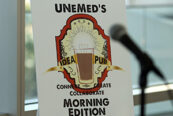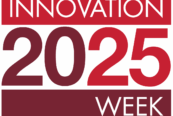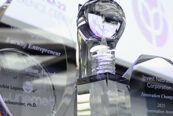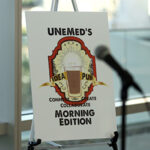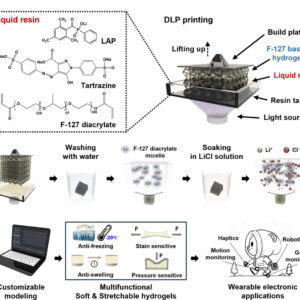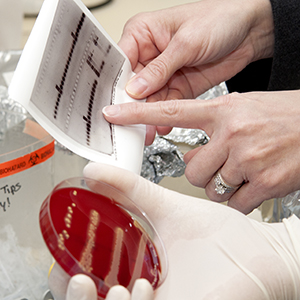by Charlie Litton, UNeMed | Dec. 31, 2014
Before moving forward it’s often useful to pause for a moment and reflect on the year that was. Here’s a review of some of the most important stories, developments, most popular posts and other highlights from UNeMed in 2014:
1. Jack Mayfield, 63
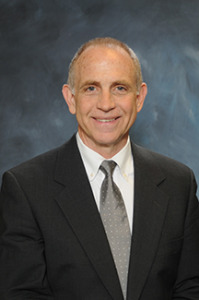 We have been spoiled by the good fortune of having only happy news to share in the realm of medical research and development, so we were unprepared for the harsh reality of saying goodbye to our friend and colleague, Jack Mayfield, who suddenly passed in late October. It was a tough, bitter pill to swallow, and one we still lament today. The profound loss was a seismic event felt by everyone in our office, many others in the university system and even the region. By comparison, the remaining items on the following list seem trivial.
We have been spoiled by the good fortune of having only happy news to share in the realm of medical research and development, so we were unprepared for the harsh reality of saying goodbye to our friend and colleague, Jack Mayfield, who suddenly passed in late October. It was a tough, bitter pill to swallow, and one we still lament today. The profound loss was a seismic event felt by everyone in our office, many others in the university system and even the region. By comparison, the remaining items on the following list seem trivial.
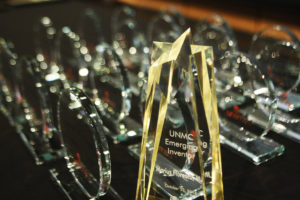 2. Innovation Week: 2014
2. Innovation Week: 2014
One of the largest portions of traffic driving through the site was dedicated to information about our annual series of events called Innovation Week. We carried several stories about some of the innovations and research that were featured at Demo Day (see below), a seminar dedicated to fostering better collaborations between academia and industry, our annual open house, and a new scavenger hunt event. But the main event has always been the week-ending Innovation Awards Ceremony and Reception, which named Marius Florescu, M.D., the 2014 Emerging Inventor for technologies he’s working on associated with hemodialysis. The Most Promising Invention of 2014 was Jason MacTaggart’s, M.D., Aquablade, a high-pressure water jet that can safely cut tissue amid the flowing blood within the vasculature.
3. My first year: What everyone should know about tech transfer

As I completed my first year with UNeMed, I reflected on what I learned about the technology transfer industry. I came into the job with some preconceived notions that turned out to be plain wrong. The popularity of the post was a welcome surprise, but I think it’s also telling. Judging from the entirely positive feedback, most tech transfer offices operate under the same guiding principles and philosophies.
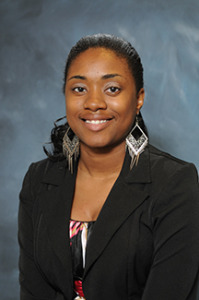 4. Current treatments and innovative advances in diabetic research
4. Current treatments and innovative advances in diabetic research
Licensing associate Caronda Moore, PhD, penned a short blog about what we might soon see in the way of future breakthroughs for diabetes. Our office has been excited about a new gene transfer therapy for diabetics developed by Keshore Bidasee, PhD We were so impressed that it was our Innovation of the Year in 2013. The technology shows a lot of promise. In early testing, it appears to reverse a lot of the damage cause by diabetes, while lowering blood sugars levels. In this piece, however, Moore looks beyond Dr. Bidasee’s discovery to additional possibilities that might lie on the horizon.
5. Inflammation: The problem with heart disease and what we can do
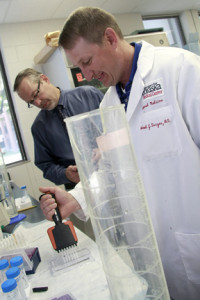
Practicing cardiologist and researcher Dan Anderson, M.D., PhD, breaks down the core problem of coronary artery disease and how it leads to heart disease. In a fascinating and easy-to-understand examination of how heart disease progresses into a life threatening condition, Dr. Anderson also offers a sliver of hope that our ability to help more people may soon happen. Dr. Anderson is part of a team of UNMC researchers who are on verge of developing a new blood test that make heart disease entirely more predictable, and thus more preventable.
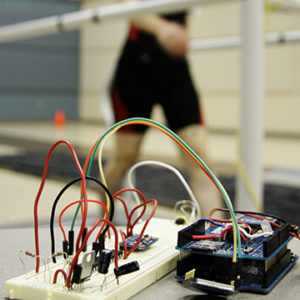 6. The next big thing: Biomechanics and your smartphone
6. The next big thing: Biomechanics and your smartphone
Fascinating research from the University of Nebraska at Omaha’s one-of-kind biomechanics facility inspired UNeMed’s business development manager, Joe Runge, to explore all that might be possible with something as ubiquitous as the smartphone. Runge’s thoughts appear to have been somewhat prescient, as several technologies are emerging from the labs of Nick Stergiou, PhD, that improve treatments or diagnostic abilities for a wide variety of ailments and conditions, including concussions, chronic obstructive pulmonary disorder, fall prevention in the elderly, or even autism. I suspect more detailed announcements about these technologies will populate next year’s list of top stories.
7. UNeMed shareholder meeting announces Shanghai office, success in 2014
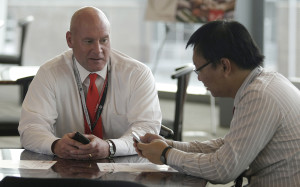 By all our measures, the 2014 Shareholder Meeting was a runaway success. While the meeting served several notable purposes, it also marked the first public announcement that UNeMed was expanding its operation to China with the establishment of UNeMed Health Consulting Services Shanghai, or UNMC China for short. Shortly after the brief announcement at the August shareholder meeting, UNeMed officially opened the doors to its Shanghai offices in October, and will use the presence to create more opportunities and stronger partnerships than ever before.
By all our measures, the 2014 Shareholder Meeting was a runaway success. While the meeting served several notable purposes, it also marked the first public announcement that UNeMed was expanding its operation to China with the establishment of UNeMed Health Consulting Services Shanghai, or UNMC China for short. Shortly after the brief announcement at the August shareholder meeting, UNeMed officially opened the doors to its Shanghai offices in October, and will use the presence to create more opportunities and stronger partnerships than ever before.
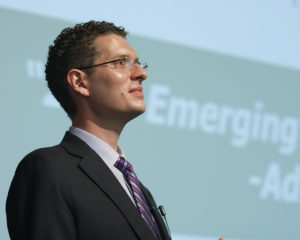 8. Why we care about the startup and entrepreneur communities
8. Why we care about the startup and entrepreneur communities
Superficially, this post was a look at a recent success story of UNMC technology resulting from UNeMed’s consistent and continued involvement in the startup and entrepreneur communities. But the popularity of the post speaks to the true intent of the piece, which was to highlight the importance of those communities and how tech transfer offices like ours would be wise to consider dedicating resources toward them. It takes patience and a long-view approach before any dividend can be expected, but building a biotech industry in a traditionally agronomic culture like Nebraska can’t happen overnight. But it can be done, and there is ample evidence showing Omaha is shifting towards more high-tech, high-growth industries like biotech.
9. Containing Ebola means we must care for the caregivers
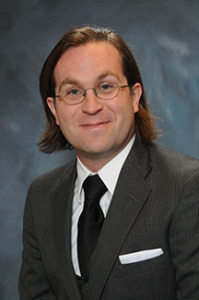 National media extensively covered the University of Nebraska Medical Center’s involvement with the treatment of Ebola patients who were infected while helping people in stricken Africa nations. When we first heard that Richard Sacra would be our first Ebola patient at the now world-renown biocontainment facility, we shared many of the conflicted emotions that everyone felt. But upon final examination, we were all proud to be associated with an institution that had the people, training, facilities and expertise to handle such patients. And as Joe Runge elegantly pointed out in this blog post, the best hope of containing the outbreak is to care for those frontline caregivers who bear the brunt of the risk as they try to save lives and comfort the afflicted.
National media extensively covered the University of Nebraska Medical Center’s involvement with the treatment of Ebola patients who were infected while helping people in stricken Africa nations. When we first heard that Richard Sacra would be our first Ebola patient at the now world-renown biocontainment facility, we shared many of the conflicted emotions that everyone felt. But upon final examination, we were all proud to be associated with an institution that had the people, training, facilities and expertise to handle such patients. And as Joe Runge elegantly pointed out in this blog post, the best hope of containing the outbreak is to care for those frontline caregivers who bear the brunt of the risk as they try to save lives and comfort the afflicted.
 10. Innovate to Innovate: New yardsticks needed to create new ideas
10. Innovate to Innovate: New yardsticks needed to create new ideas
I found it remarkable — and worth writing about — the amount of smaller, lesser known innovations necessary just to get the big idea off the ground. It prompted a series of posts about researchers who must “innovate to innovate.” This was in the context of a researcher here, Marius Florescu, M.D., who had an idea for a better hemodialysis. Dr. Florescu thought he had a better way to help patients suffering kidney disease and failure and face regular dialysis treatments. Those patients often undergo a surgical procedure that connects a vein and artery, usually in the arm, becoming a portal that plugs into dialysis machines. Called an AV or arteriovenous fistula, these ports are complicated and prone to failure and complications. Dr. Florescu’s idea might solve some of those issues, but he had no way to prove it—until he invented a whole new process and procedure. The early success of the experiments, and subsequent industry interest, is part of the reason why Dr. Florescu was named the 2014 Emerging Inventor of the year.
Honorable Mention
Six new technologies featured at Demo Day 2014
The UNMC Technology Demonstration Day entered its second year during the 2014 Innovation Week festivities, and featured six promising innovations that have been licensed to existing companies, served as the basis of a new startup, or attracted intense interest from industry. The presentations were all videotaped and all but one are publicly available for viewing: Coronary artery disease biomarker; Labpoint middleware; COPD detection platform; hemodialysis catheter; laparoscopic training simulator. Acera Surgical declined to make public its presentation.
Nebraska Invests $100k in UNMC nanotech startup
We have a soft spot for ProTransit Nanotherapy, an Omaha-based biotech startup that was built off the innovations of a former UNMC researcher. It’s true, the company CEO, Gary Madsen, was our entrepreneur in residence as he founded the company, but the amazing ability of the technology and its potential to help people is why we go a little weak in the knees. And so we’re always excited to hear about Dr. Madsen and his fledgling operation reach a major milestone. He’s one-step closer to making things like sunscreen and cosmetics effective barriers against skin cancer, and he’s has other products in the pipeline that have shown some jaw-dropping results with testing in repairing damaged brain cells and spinal tissue. We are still years from seeing any of this outside the lab, but we’re happy to report that the progress thus far looks great.
UNeMed in the news
A new feature began last year highlighting the occasions when UNeMed, UNMC researchers or their inventions reached local, regional or national media. The page is growing into a long list of short blurbs that summarize the media mentions and link to the news items when possible. Some media links will inevitably break once outlets remove those stories from their servers, but we will continue to curate this popular new feature. We will try to replace those broken links with alternate versions as we become aware of them.
Classics
Several posts from previous years remain popular and relevant, in some cases more than a year after their original publication date — particularly those that focus on day-to-day operations and legal issues associated with intellectual property.
- The importance of technology transfer
- Safeguarded in the vault: How trade secrets work
- Technology transfer 101: Defining research commercialization
- How to determine who is an inventor: Unraveling inventorship vs. authorship

